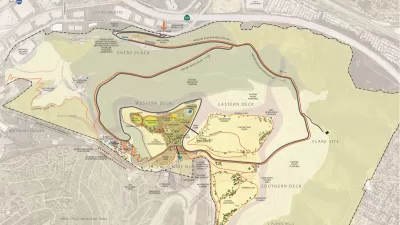State and local governments across the United States are beginning to divert waste from landfills and promote organic composting.
In 2010, 97% of America's 35 million tons of food waste went into landfills, while more than 60% of yard trim got recycled.
Waste management policy varies across communities in the U.S. The City of San Francisco has set out to achieve net zero waste by 2020, charging businesses and residents according to the amount of waste they produce. Since October 2011, Portland, Oregon has reduced its waste collection by 40%, picking up organic waste, including food, once a week and all other trash once every two weeks.
Driven by public policy and consumer demand for greener waste disposal, private waste management companies have begun divesting themselves from landfills and incineration sites and investing in recycling companies like Massachusetts-based Harvest Power, which converts solid organic waste into high quality soil or energy.
Smaller ventures like Washington, DC-based Compost Cab charge residents directly to collect their food waste and divert it to local gardeners and farms for composting.
Brenda Platt, who advocates composting for the DC-based Institute for Local Self-Reliance, believes that interest in recycling food waste is growing but that finding local composting sites is a challenge.
Of the nation's food retailers, Safeway has launched its own composting program: Safeway stores across the East Coast send their flower stems, coffee grinds and food waste to a return center in Upper Marlborough, MD, which then ships the remains to composting sites 100 miles away in Delaware and Virginia.
Decomposing food waste in landfills contributes to 16% of methane greenhouse gas emissions in the U.S., so municipalities and state governments are phasing in bans on food waste disposal despite the challenges of finding composting sites and reeducating the general population.
FULL STORY: Composting efforts gain traction across the United States

Planetizen Federal Action Tracker
A weekly monitor of how Trump’s orders and actions are impacting planners and planning in America.

Maui's Vacation Rental Debate Turns Ugly
Verbal attacks, misinformation campaigns and fistfights plague a high-stakes debate to convert thousands of vacation rentals into long-term housing.

San Francisco Suspends Traffic Calming Amidst Record Deaths
Citing “a challenging fiscal landscape,” the city will cease the program on the heels of 42 traffic deaths, including 24 pedestrians.

Amtrak Rolls Out New Orleans to Alabama “Mardi Gras” Train
The new service will operate morning and evening departures between Mobile and New Orleans.

The Subversive Car-Free Guide to Trump's Great American Road Trip
Car-free ways to access Chicagoland’s best tourist attractions.

San Antonio and Austin are Fusing Into one Massive Megaregion
The region spanning the two central Texas cities is growing fast, posing challenges for local infrastructure and water supplies.
Urban Design for Planners 1: Software Tools
This six-course series explores essential urban design concepts using open source software and equips planners with the tools they need to participate fully in the urban design process.
Planning for Universal Design
Learn the tools for implementing Universal Design in planning regulations.
Heyer Gruel & Associates PA
JM Goldson LLC
Custer County Colorado
City of Camden Redevelopment Agency
City of Astoria
Transportation Research & Education Center (TREC) at Portland State University
Jefferson Parish Government
Camden Redevelopment Agency
City of Claremont




























